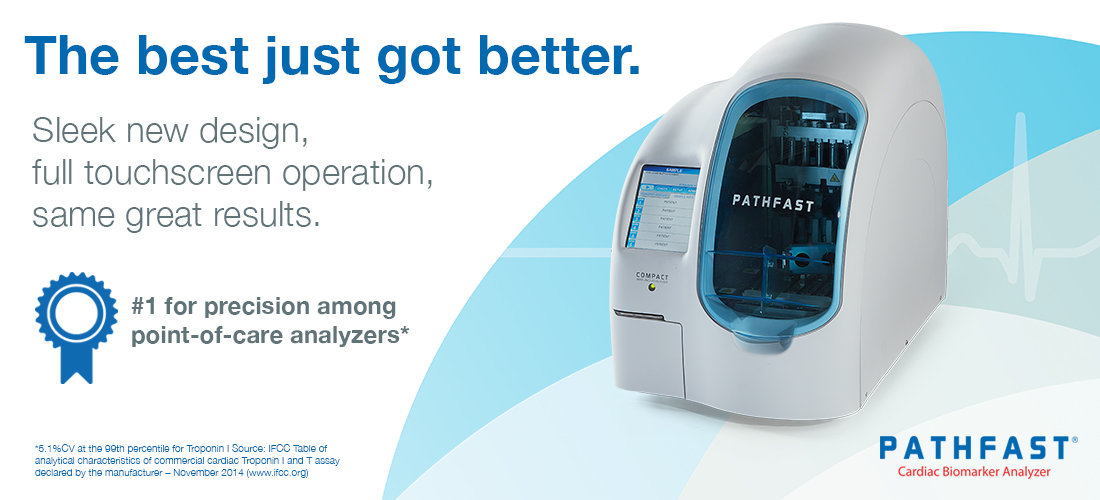By Pathfast
01/27/2018 Cardiac markers play a vital role in the detection of Acute
Myocardial Infarction (AMI) when the patient’s history and ECG are
non-diagnostic or vague. Diagnosing AMI early (i.e. within 6 hours after
symptoms begin) is not easy as some time must lapse after symptom onset
for cardiac markers to exceed values above the reference point. The
sensitivity of cardiac markers for the early diagnosis of AMI is
influenced by the factors mentioned below:
Time of presentation: The earlier the presentation
after symptoms begin, the more the likelihood that the cardiac marker
will show a relatively increased sensitivity like myoglobin and lesser
sensitivity like CK-MB or cTnI. Myoglobin is released very early in the
course of AMI, and CK-MB or cTnI is released a little later. A delayed
presentation is likely to have the opposite effect. Therefore, the onset
of symptoms should be considered when commenting on the sensitivity of
the cardiac markers for the early diagnosis of AMI.
Size of infarct: The bigger the infarct, the greater
the quantity of cardiac markers released. This leads to improved
sensitivity of the cardiac marker.
Selection criteria and prior probability of acute myocardial infarction:
Selecting people or patients with a high possibility of AMI, such as
those admitted to the CCU, can influence the sensitivity of a cardiac
marker.
Treatment: Treatment can have an influence on the
sensitivity of the marker. For example, patients who have been
successfully thrombolysed show a greater sensitivity to the cardiac
markers than those who were not successfully reperfused.
Diagnostic threshold: The selection of an
appropriate diagnostic threshold requires careful consideration of
concentrations seen in the normal and disease-free population and those
seen in diseased populations. If the cut-off concentration used is low,
the sensitivity is improved at the expense of specificity unless the
marker is 100% cardiac specific, and only present in diseased
populations.
Kinetic factors: The molecular size of the marker,
the biological section of the marker, the volume of distribution, and
whether the marker is released directly into the blood or cleared by the
lymphatic system, can all influence plasma concentration. Markers that
have a low molecular weight show better early sensitivity than larger
molecules.
PATHFAST – Cardiac Biomarker Analyzer
PATHFAST determines the quantity of Troponin I, CK-MB, and Myglobin
from both whole blood and plasma samples, providing results within
minutes, and facilitating critical care decisions for patients with AMI.
Measurement of cardiac Troponin I is used an as an aid in the diagnosis
of AMI. Troponin I is released rapidly in blood circulation after the
onset of AMI.
Contact Us
Pathfast is number 1 for precision among point-of-care analyzers.
Consider Pathfast Cardiac Biomarker Analyzer for early detection of AMI
and for better quality cardiac care. Call 800-431-2123 or email tpucci@polymedco.com.

PATHFAST is an easy to use, bench-top chemiluminescent immunoassay analyzer providing affordable, core-lab quality results from whole blood samples in under 17 minutes. With the flexibility to run up to six tests simultaneously, and results that are unaffected by hemolysis, PATHFAST ensures accurate…
Cardiac Markers and Early Detection of Acute Myocardial Infarction
Pathfast Cardiac Biomarker Analyzer



